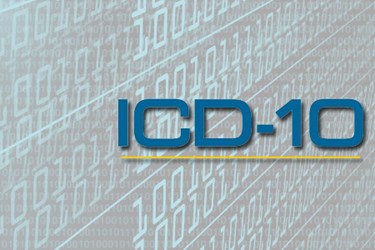Healthcare IT News For VARs — May 2, 2014
By Megan Williams, contributing writer

In the news, behavioral healthcare providers are looking for help with their ICD-10 solutions. Also, the Health Records Association has opposed the decision to shorten the time between Meaningful Use certification editions, arguing it is in opposition to produce high-quality software and conduct proper training.
Behavioral Health Providers In Need Of ICD-10 Solutions
Behavioral health providers, with thin margins, are especially vulnerable to delays in claim reimbursement brought on by ICD-10 issues. Healthcare Finance News reports that this class of health providers is advised to use the delay in ICD-10 implementation to work out kinks in their systems and coordinate with the changeover to DSM V.
Meaningful Use Criteria Faces Opposition From EHR Group
The Health Records Association, according to Health Data Management, has taken issue with the cost of meeting and being certified on additional levels of Meaningful Use certification. The organization, which is comprised of 40 EHR companies, has complained that The Office of the National Coordinator for Health Information Technology (ONC) decision to shorten time periods between new editions flies in the face of their efforts to deliver high-quality software and properly train customers on product use.
IBM Expands U.S. Healthcare Involvement
IBM has announced that it will be deploying its Watson cognitive computing technology in its work with U.S. Federal Healthcare Practice. According to eWeek, Watson’s cloud services will be a key part of IBM’s involvement with federal government healthcare systems in helping entities by providing them with new insights from clinical, social, and behavioral data. The company will also be implementing Big Data solutions for the government.
Solutions Adding To Doctor Morale Problems
The Information Daily reports on many of the issues that have brought the morale of American doctors to an all time low. One of the primary issues is a demonstrated disconnect between solutions providers and the needs of doctors, along with doctors’ frustration that solutions providers are not genuinely aware of how healthcare entities are reimbursed for their services.
Heartbleed And What It Means To Health IT Security
According to the MIT Technology Review, the impact of the Heartbleed bug does not bode well for health IT security. Evidence is already mounting that companies that develop electronic health record software and other health IT products are not prepared to react to security issues of any kind. Significant vulnerabilities have already been discovered in common health informatics software. Vendors specifically offer little insight into their security own preparedness.
Healthcare IT Talking Points
This post from Government Health IT discusses strategies around making IT changes more palatable for doctors. “It’s like herding cats to get doctors to change, so be careful how you engage doctors and create a partnership with them … Pretend it’s an 80-20 partnership in the doctor’s direction and you’ll get where you want to go.” The article discusses concepts like generating interest and being mindful of the amount of stress doctors are under.
Kalorama, in its 7th annual report titled “EMR 2014: The Market for Electronic Medical Records,” has released findings that the global market for electronic health record systems grew to $23.2 billion in 2013. The report includes the following:
- 2013 global market estimates for EMR, and growth since 2011
- United States, European, and Asia Pacific EMR market estimates
- Market forecast to 2018
- Market share of top vendors
- Hospital and physician EMR usage statistics
- Pricing of select EMR systems and ROI for physicians
- Overview of EMR, EHR, CPOE and other functions
- Breakout of hospital EMR market and physician/Web EMR market
- Profiles of major vendors and smaller companies to watch
- Analyst conclusions regarding the EMR market
The report can be downloaded here.
For more news and insights, visit BSMinfo’s Healthcare IT Resource Center.
